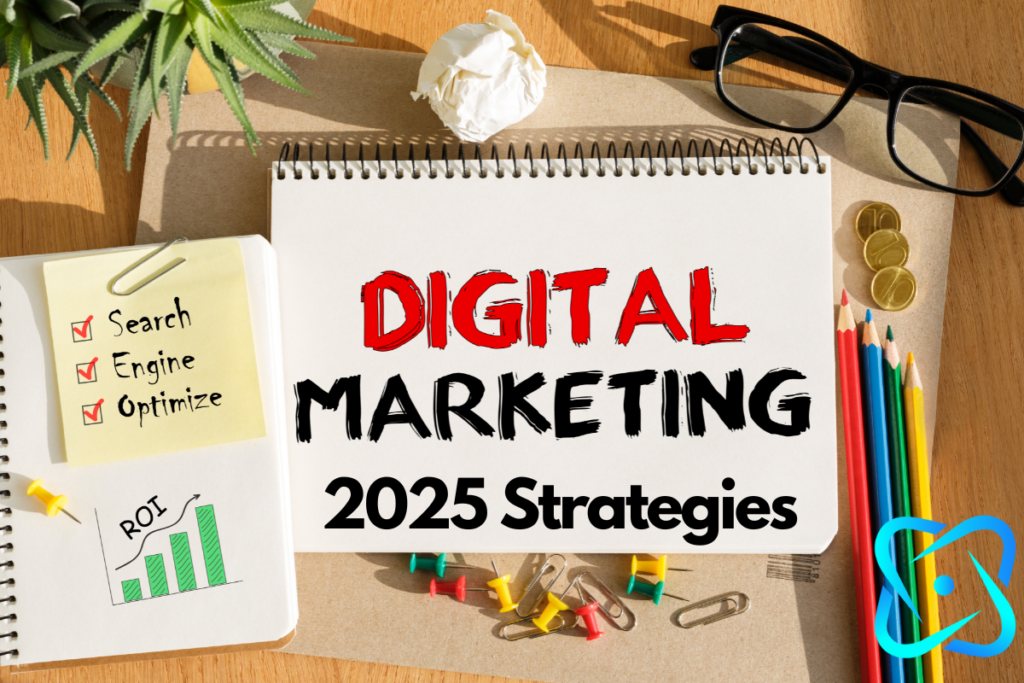Creating a Digital Marketing Strategy: A Beginner’s Roadmap
In today’s digital age, having a robust digital marketing strategy is crucial for businesses of all sizes. Whether you’re a small startup or a large corporation, your online presence can significantly impact your brand’s success. According to Statista, global digital ad spending is projected to reach $525 billion by 2025, highlighting the importance of a strategic approach. This blog post will guide you through creating an effective digital marketing strategy tailored for beginners.

Understanding Digital Marketing
Digital marketing encompasses all marketing efforts that use the internet or electronic devices. Businesses leverage digital channels such as search engines, social media, email, and websites to connect with current and prospective customers. A well-rounded strategy will integrate these channels to achieve marketing goals.
The Importance of a Digital Marketing Strategy
Without a clear strategy, your marketing efforts can be inefficient and unproductive. A structured plan allows you to:
- Identify your target audience and understand their needs
- Set specific, measurable goals
- Allocate resources effectively
- Track progress and make data-driven decisions
Steps to Create a Digital Marketing Strategy
Follow these steps to develop a comprehensive digital marketing strategy that aligns with your business objectives:
1. Define Your Goals
In today’s fast-paced digital world, having a clear direction is essential for any marketing strategy. One of the first steps in creating a successful digital marketing plan is defining your goals. Whether you’re a seasoned marketer or a newbie, understanding what you want to achieve can make all the difference.
Whether it’s increasing brand awareness, generating leads, or driving sales, your goals should be SMART: Specific, Measurable, Achievable, Relevant, and Time-bound. Let’s break it down
Specific: Pinpoint Your Objectives
The first step in setting effective goals is to be as specific as possible. Vague goals like “improve website traffic” won’t cut it. Instead, aim for something more precise, like “increase website traffic by 30% over the next three months by targeting specific keywords and optimizing content.” This clarity gives your team a clear target to aim for.
Measurable: Track Your Progress
Goals should always be measurable so you can track your progress and know when you’ve achieved them. Use tools like Google Analytics to monitor website traffic, conversion rates, and other key metrics. For instance, if your goal is to generate leads, decide on a specific number you want to reach, such as “generate 500 new leads in the next quarter.”
Achievable: Set Realistic Expectations
While it’s important to aim high, your goals should still be realistic and attainable. Consider your current resources and constraints. If you’re a small business with a limited budget, aiming to double your sales in a month might not be feasible. Instead, set a goal that’s challenging yet within reach, like “increase sales by 15% over the next six months.”
Relevant: Align with Your Broader Objectives
Your digital marketing goals should align with your broader business objectives. If your company aims to expand into new markets, your marketing goals might focus on building awareness in those areas. Make sure that every goal you set contributes to the overall mission and vision of your brand.
Time-bound: Set a Deadline
Every goal needs a deadline to create a sense of urgency and motivation. Without a timeframe, your goals may lose focus and direction. Decide on a specific period for achieving your goals, such as “within the next quarter” or “by the end of the year.” This helps keep your team on track and accountable.
2. Understand Your Audience
Knowing your audience is key to creating content that resonates with them. Use tools like Google Analytics or Facebook Audience Insights to gather data on demographics, preferences, and behavior. Create detailed buyer personas to guide your strategy.
3. Conduct a Competitor Analysis
Analyze what your competitors are doing in the digital space. Identify their strengths and weaknesses, and find gaps or opportunities you can exploit. Tools like SEMrush and SimilarWeb can provide valuable insights into competitors’ strategies.
4. Choose Your Digital Marketing Channels
Based on your audience and goals, select the most effective digital channels. Common channels include:
Search Engine Optimization (SEO)
SEO is all about optimizing your website to rank higher in search engine results. This means using relevant keywords, creating quality content, and ensuring your site is user-friendly. If you want to attract organic traffic and improve visibility, SEO is a must!
Pay-Per-Click (PPC) Advertising
PPC ads are a quick way to get your brand in front of potential customers. You pay a fee each time someone clicks on your ad, making it a cost-effective option for driving traffic to your website. Platforms like Google Ads allow you to target specific audiences, ensuring your ads reach the right people.
Social Media Marketing
Social media platforms like Facebook, Instagram, Twitter, and LinkedIn offer fantastic opportunities to engage with your audience. By creating shareable content and interacting with users, you can build a strong community around your brand. Plus, social media advertising can further extend your reach.
Email Marketing
Don’t underestimate the power of a good email campaign! Email marketing allows you to communicate directly with your audience, providing personalized content that can drive engagement and conversions. It’s also a great way to nurture leads and build customer loyalty.
Content Marketing
Content is king, as they say, and for good reason. By creating valuable, informative content, you can establish yourself as an industry authority and attract a dedicated audience. Blog posts, videos, infographics, and eBooks are just a few examples of content that can captivate your audience.
5. Develop a Content Strategy
Content is the backbone of digital marketing. Develop a content strategy that outlines the type of content you will create, the channels you’ll use to distribute it, and a publishing schedule. Quality content should educate, engage, and inspire your audience.
6. Set a Budget
Determine how much you’re willing to spend on your digital marketing efforts. This includes costs for tools, advertising, content creation, and personnel. Allocate your budget based on the channels that provide the highest return on investment (ROI).
7. Implement and Monitor Your Strategy
Execute your digital marketing plan, keeping an eye on performance metrics. Use analytics tools to track key performance indicators (KPIs) like website traffic, conversion rates, and social media engagement. Regularly review your strategy and adjust as needed.
Actionable Tips for a Successful Digital Marketing Strategy
To enhance your strategy, consider these actionable tips:
- Stay updated on trends: The digital landscape is constantly evolving. Stay informed about the latest trends and technologies to keep your strategy relevant.
- Prioritize mobile optimization: With more than half of web traffic coming from mobile devices, ensure your website and content are mobile-friendly.
- Leverage video content: Video is a powerful tool for engagement. Platforms like YouTube and Instagram Stories can enhance your reach.
- Focus on personalization: Tailor your content and marketing messages to individual customer preferences to improve engagement and conversion rates.
Conclusion
Creating a digital marketing strategy may seem daunting, but by following this roadmap, you can build a solid foundation for your online presence. Remember, the key is to stay flexible and adapt to changes in the digital landscape. With clear goals, an understanding of your audience, and a commitment to continual improvement, your digital marketing strategy can drive significant growth for your business.
We hope this guide has given you a clear understanding of how to create a digital marketing strategy. For more insights, keep exploring our blog and feel free to contact us for personalized advice.



